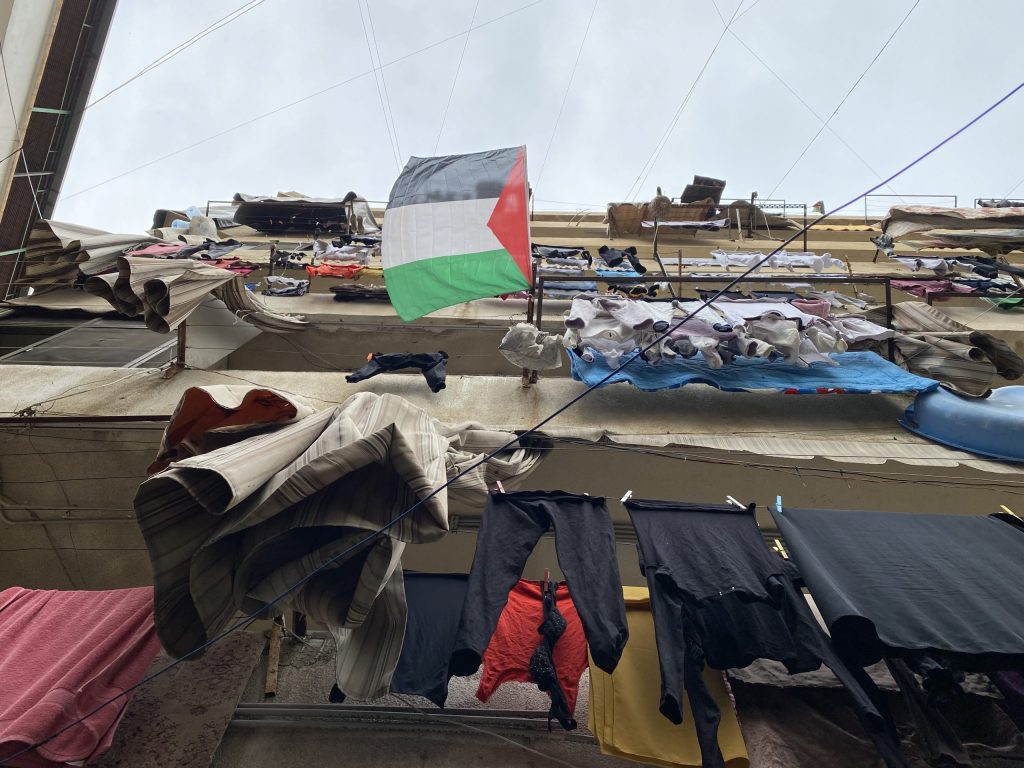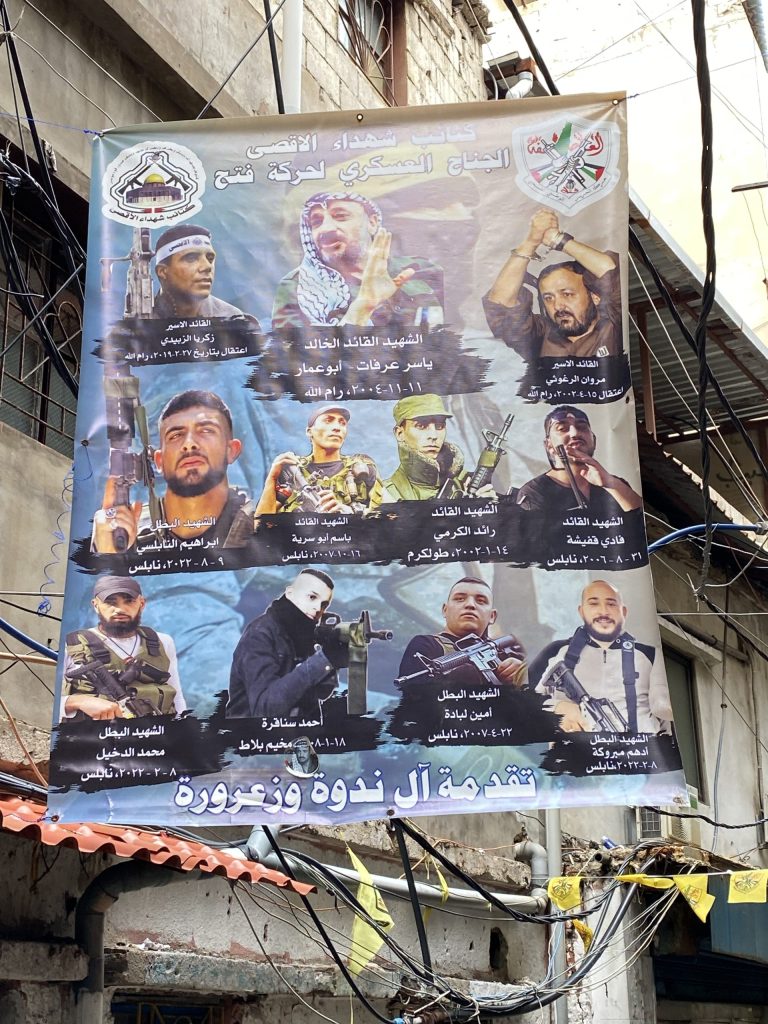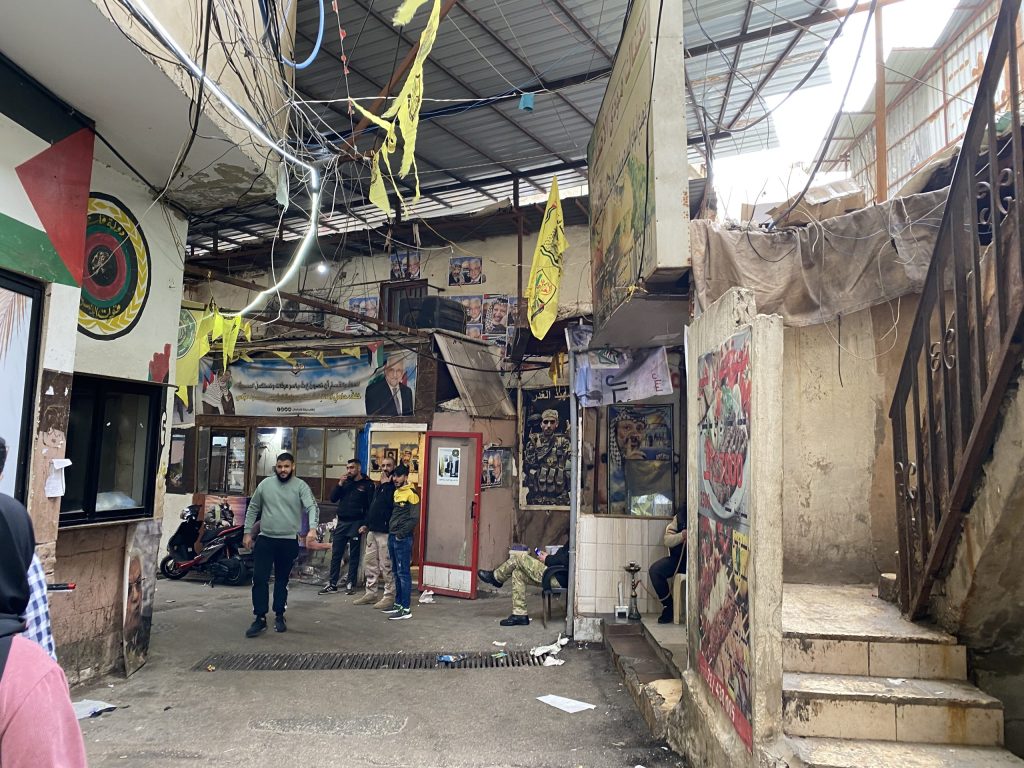(This article is based on a presentation I made on March 22, 2023 to Students for Justice for Palestine at Carleton University (SJP Carleton). My thanks to SJP Carleton for inviting me to speak to their organization’s members, and for the excellent discussion that followed my presentation.)
This week, while travelling in Lebanon for the first time, I visited the Shatila camp for Palestinian refugees, situated in southern Beirut.
The Crisis in Lebanon
From the time of my arrival in Lebanon on March 19, it became evident to me that Lebanon is a deeply troubled country.
I arrived at Beirut International airport at night. As soon as my taxi exited the airport, I noticed that much of the capital was plunged in darkness. My taxi driver – a former professional accountant who lost his accounting job about five years ago – explained to me that the state-owned electricity utility is able to provide electricity to most Lebanese for fewer than three hours a day.
Those who have the financial means to do so purchase their own electricity generators or pay for access to generators owned by others. Generally, the generators are powered by diesel fuel, which is prohibitively expensive for many Lebanese and which exacerbates an already elevated degree of air pollution.
Less than two weeks before my arrival, Human Rights Watch issued a report condemning the Lebanese government’s failure to respect the people’s right to electricity. In Lebanon, the level of multi-dimensional poverty is as high as 85%. The Lebanese pound is plunging. This month, Lebanon’s national currency hit a record low against the U.S. dollar. According to some reports, the unofficial exchange rate is now 140,000 LBP per 1 USD. According to that exchange rate, the largest Lebanese banknote in circulation, the 100,000 LBP bill, is now worth just 71 cents.
Lebanon’s already tottering economy was devastated by a massive explosion at the Port of Beirut in August 2020. The explosion killed 218 people, injured 7,000 and left 300,000 displaced. Considered one of the biggest non-nuclear explosions to have been recorded, it damaged 77,000 apartments and caused up to $5 billion in material damage. It reportedly was caused by the detonation of 2,750 tonnes of ammonium nitrate, which had been improperly stored in a Port warehouse for six years. So far, despite widespread protests, no one has been held accountable for this tragedy. This has fuelled outrage among the people.
The day after my arrival in Lebanon, I visited the site of the explosion, as well as a memorial at the Port that had been erected in honour of its victims.



Many of the buildings that stand adjacent to the Port of Beirut continue to show signs of damage, more than two years after the explosion:

Shatila: The Forgotten Refugee Camp
A few days after my visit to the Port of Beirut, I travelled to the Shatila camp for Palestinian refugees, in southern Beirut.
The Shatila camp was established in 1949. It was devastated during the 1982 Israeli invasion of Lebanon and frequently targeted during the Lebanese civil war, resulting in extensive destruction and dilapidation of shelters and infrastructure. Initially comprising around 500 residential units, the camp has grown tenfold since its establishment. Most of the growth has been vertical, with new shelters being erected on top of existing ones without proper foundations. In 2014, the camp’s population was estimated to be between 10,000 and 22,000.
On our way to Shatila, we passed through the suburb of Dahiya, reputed to be a stronghold of Iranian-backed Hezbollah. In Dahiya, a large billboard has been erected in honour of the Iranian general Qasem Soleimani. The Trump administration assassinated Soleimani in 2020. This almost ignited a full-scale war between Iran and the United States.

My guide for my visit to the camp was a lifelong resident of the camp. Her name is Soha. She is referred to affectionately by the camp’s inhabitants as “the mayor” because of her deep knowledge of the camp and her tireless efforts to educate others about its plight.
Our first stop at Shatila was the mass grave for the victims of a massacre. In 1982, Israel invaded Lebanon during its civil war. Israel’s objective was to destroy the Lebanon-based forces of the Palestinian Liberation Organization. In September of that year, the right-wing Phalange militia, in coordination with Israeli forces, slaughtered between 2,000 and 3,500 Palestinian refugees and Lebanese civilians. Survivors testified of rapes and mutilations. In February 1983, a United Nations commission found that “Israeli authorities or forces were involved, directly or indirectly in the [Sabra and Shatila] massacres”. Despite this, no Israeli or Lebanese fighter or official has been held accountable.
I took the video below in the memorial that has been erected on top of the mass grave.
After visiting the mass grave, Soha led me on a walk through the camp. From the outset of our trek, it was clear that Shatila suffers from a broad array of severe environmental challenges.
One such challenge is water supply. Soha explained that the camp’s tap water is salty. When she washes her face with tap water in the morning, she experiences stinging in her eyes. The tap water is undrinkable. The limited quantity of potable water available to the camp’s inhabitants is trucked into the camp on a regular basis and stored in large, plastic bins.
Several years ago, the United Nations Relief and Works Agency (UNRWA), which is mandated by the United Nations to care for Palestinian refugees, undertook to build a water rehabilitation facility at Shatila. Although the Federal Republic of Germany provided funding for the facility, UNRWA never completed it. In a cruel irony, the tower constructed to house the facility now consumes scarce space within the densely populated camp while posing a safety hazard, due to its crumbling facade.
Germany’s government has been one of the most ardent supporters of Israel’s apartheid regime. The least that Germany could do is to supply the funding necessary to complete and maintain Shatila’s water rehabilitation facility.
At Shatila, UNRWA is also charged with ensuring adequate sanitation services. The number of sanitation staff has not increased in some time, however, despite a rapid expansion in the camp’s population. This means that garbage accumulates frequently. This has led to a chronic infestation of rats.
Failures such as these have generated considerable antipathy toward UNRWA and the United Nations among Shatila’s inhabitants. Evidently, a large majority of the funding provided to UNRWA is consumed by the salaries of its employees and other administrative expenses. Only a small proportion of that funding is actually deployed to improve the lives of Palestinian refugees.
Another severe problem within the camp is electricity generation. Like most of the inhabitants of Lebanon, the people of Shatila are almost entirely dependent on diesel-powered generators for the little electricity that they have. Their dependence upon these generators exacerbates air pollution, which is already elevated within the camp due to constant vehicular congestion in the camp’s narrow streets and alleys.
Shatila’s inhabitants confront a safety hazard related to their energy deficit: the electrical wiring that connects the generators to the dwellings is chaotic and exposed to the elements. Much of it hangs in a dangled mass over the heads of pedestrians as they navigate the choked paths of Shatila.
When it rains in Shatila, it is not uncommon for an inhabitant of the camp to be electrocuted while walking its streets. Originally, I had planned to visit the camp two days earlier, but because it was raining on that day, my guide advised me that it would be unsafe for me to walk the streets of Shatila.
Another form of pollution afflicting the camp is noise. The camp occupies approximately one square kilometre. Consequently, it is extremely densely populated. The narrow streets are clogged with scooters that are constantly honking their horns as they navigate through throngs of pedestrians.
Shatila’s tall buildings are separated by narrow alleyways. The narrow spacing between multi-level structures prevents sunlight from entering most dwellings. The lack of sunlight has resulted in an endemic vitamin D deficiency among the camp’s inhabitants. This is particularly true of Shatila’s female inhabitants, who venture outdoors less frequently than the male inhabitants.
In Shatila, there are virtually no green spaces. The video below shows what was described to me as the camp’s largest square and the place where children living in the camp play most frequently. As the video shows, there is almost no greenery in the square. (Soha appears in the below video starting at 00:09; she is wearing a black headscarf and holding a plastic water bottle in her left hand.)
At least one family living in the camp has nevertheless managed to create the semblance of a garden.

Finally, Soha complained of the almost complete lack of privacy in the camp. The dwellings are so small and are packed so closely together, she explained, that she knows all of the problems in her neighbours’ families, and they know all of hers. At Shatila, Palestinian refugees are forced to air – both figuratively and literally – their ‘dirty laundry’:

Although UNRWA and the barely functional government of Lebanon bear proximate responsibility for the living conditions of Shatila’s inhabitants, Israel bears ultimate responsibility. By aggressively blocking the return of Palestinian refugees to their homeland while promoting emigration to Israel by persons of Jewish origin – a policy that is blatantly racist – Israel has forced Shatila’s long-suffering refugees to spend their entire lives in an environmental dystopia.
Still, the determination and national aspirations of the camp’s inhabitants do not appear to have been extinguished by the world’s indifference to their plight. To this day, the camp remains festooned with Palestinian flags and images of Palestinian leaders and fighters, both past and present.










Israel and its allied have caused irreparable damages to Palestinians hearts and souls. How could one possibly forgive them for such oppression?
I don’t know.
Thank you for this beautiful piece, dearest Dimitri, be well and wear masks in a heavily polluted areas or densely populated ones as well.
My thoughts and prayers to all refugees.
Thank you my dearest Farida!
Pity the Nation by Robert Fisk. I read this years ago and still remember a lot of the book. It was a sad day when Robert Fisk died. A great journalist rarely seen today.
https://www.goodreads.com/book/show/99826.Pity_the_Nation
The world lost a great journalist the day Robert Fisk died. His terrifying description of the movement of a US battle group in Iraq is burned into my memory.Great journalist and orator.
Thank you Dimitri for this detailed expose of the world’s indifference to one of the longest human rights disasters in history. Wishing you safety and every success as you journey to Russia and Crimea!
Thank you!